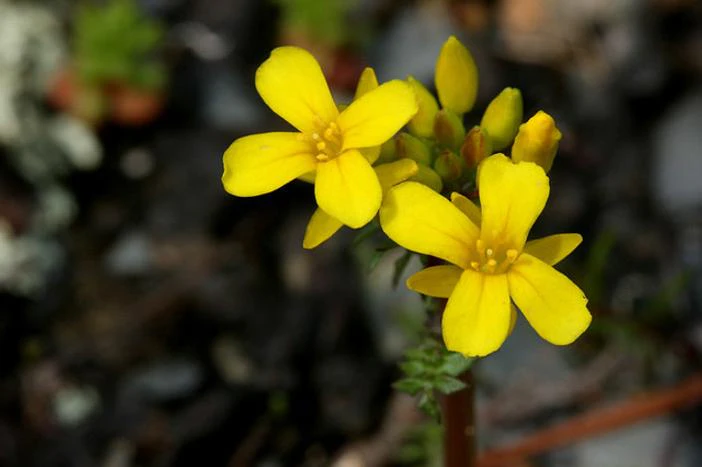Golden Selenia
(Selenia aurea)
Golden Selenia (Selenia aurea)
/
/

Cecelia Alexander
CC0 1.0
Image By:
Cecelia Alexander
Recorded By:
Copyright:
CC0 1.0
Copyright Notice:
Photo by: Cecelia Alexander | License Type: CC0 1.0 | License URL: https://creativecommons.org/publicdomain/zero/1.0/ | Uploader: aspidoscelis | Publisher: Flickr









Estimated Native Range
Climate Requirements for Farmington, Utah
| This Plant | Your Site | Plant Suitability for Your Location | ||
|---|---|---|---|---|
| • Precipitation | 21" - 57" | 19" | Your precipitation may be insufficient for this plant. Irrigate N" / year. | Irrigate N" / year |
| • High Temp. | 87°F - 94°F | 91°F | Your summer temperatures are normal for this plant. | Excellent |
| • Low Temp. | 18°F - 31°F | 19°F | Your winter temperatures are normal for this plant | Excellent |
This plant should grow well at your location with about N inches per year (Y minutes per month) of irrigation.
Summary
Selenia aurea, commonly known as Golden Selenia, is a perennial herb native to glades, rocky prairies, and open woodlands in the southern United States, specifically in Arkansas, Kansas, Missouri, and Oklahoma. It typically grows to a height of 1-2 feet (0.3-0.6 meters) and spreads to a similar width. Golden Selenia has a distinctive appearance with its bright yellow flowers that bloom from March to May, which are particularly showy and attract pollinators. The plant’s foliage is also noteworthy, with deeply lobed leaves that add texture to garden settings.
Golden Selenia is valued for its early spring flowers and its ability to thrive in poor, rocky soils where other plants might struggle. It is often used in wildflower gardens, native plant landscapes, and as a border plant. This species prefers full sun to light shade and requires well-drained soil. It is drought-tolerant once established, making it suitable for xeriscaping. While generally low-maintenance, it can be susceptible to root rot if overwatered or planted in poorly drained soils.CC BY-SA 4.0
Golden Selenia is valued for its early spring flowers and its ability to thrive in poor, rocky soils where other plants might struggle. It is often used in wildflower gardens, native plant landscapes, and as a border plant. This species prefers full sun to light shade and requires well-drained soil. It is drought-tolerant once established, making it suitable for xeriscaping. While generally low-maintenance, it can be susceptible to root rot if overwatered or planted in poorly drained soils.CC BY-SA 4.0
Plant Description
- Plant Type: Herb
- Height: 0.5-1.5 feet
- Width: 0.5-1 feet
- Growth Rate: Moderate
- Flower Color: Yellow
- Flowering Season: Spring
- Leaf Retention:
Growth Requirements
- Sun: Full Sun
- Water: Low
- Drainage: Medium, Fast
Common Uses
Drought Tolerant, Low Maintenance, Rock Garden
Natural Habitat
Glades, rocky prairies, and open woodlands in the southern United States
Other Names
Common Names: Yellow Selenia, Yellow Cups
Scientific Names: Selenia aurea, Selenia aperta, Selenia aptera, Selenia aurea var. aperta
GBIF Accepted Name: Selenia aurea